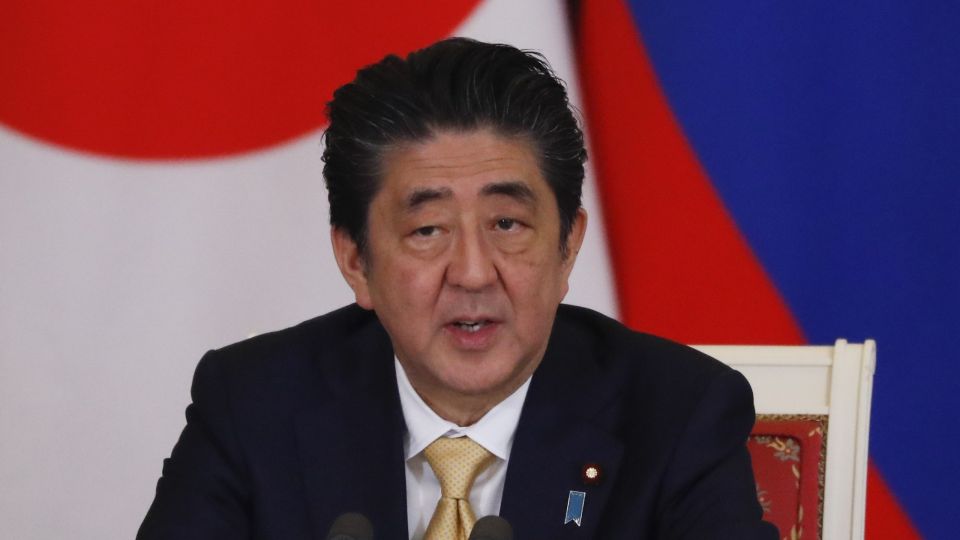September 12, 2019
Abe nominates rising political star to cabinet post.
Prime Minister Shinzo Abe, who doubles as Liberal Democratic Party president, is attempting to maintain “stability” by not changing the core members of his administration in the reshuffle of his Cabinet and party executives, while also demonstrating the ability to “challenge” by appointing young and mid-career lawmakers such as Shinjiro Koizumi of the House of Representatives.
Abe is apparently looking ahead to the end of his term as party leader in September 2021 by putting the finishing touches on his long period in power.
3rd-youngest postwar minister
A mid-career LDP lawmaker was excited Tuesday evening after watching a television report predicting Koizumi’s appointment to the Cabinet for the first time. “It’s the biggest surprise [in the reshuffle],” the lawmaker yelled.
Koizumi was elected to the lower house in 2009, inheriting the turf of his father, former Prime Minister Junichiro Koizumi. Currently in his fourth term, the 38-year-old is the third-youngest Cabinet minister appointed since the end of World War II.
With a reputation for skillfully employing biting comments in speeches and elsewhere, Koizumi is well known among the public. However, because he backed former LDP Secretary General Shigeru Ishiba in his attempt to defeat Abe in last September’s party leadership election, many party members believed he would not receive a Cabinet post this time.
Abe is thought to have tapped Koizumi because the young lawmaker strongly conveys the “challenge” aspect of Abe’s goal to present a “strong lineup of stability and challenge” in this round of personnel appointments, as well as a desire to encourage competition among his potential successors.
During the Junichiro Koizumi administration, Abe was named secretary general of the LDP in 2003 despite only being in his third term in the lower house. He was then made chief cabinet secretary in 2005 and became prime minister in 2006, culminating his rapid ascent to power.
“If Shinjiro can build a track record as a cabinet minister, I can see him running in the next [LDP] presidential election,” a senior LDP official said.
The Cabinet will thus also give Koizumi a venue for taking on new challenges himself.
So far, he has honed his policy-making skills as chairman of the LDP’s Agriculture and Forestry Division and Health, Labor and Welfare Division. However, ministers need a wide range of abilities, such as for diplomatic negotiations, domestic coordination and responding to questions in the Diet. As a member of the Cabinet, he will need to be more cautious in his statements.
In addition to Koizumi, Abe has appointed other “post-Abe” candidates to key positions.
In the party’s executive lineup, Policy Research Council Chairman Fumio Kishida retained his post and Yoshihide Suga remains chief cabinet secretary. Toshimitsu Motegi was moved from state minister for economic revitalization to foreign minister, and Katsunobu Kato was appointed to lead the Health, Labor and Welfare Ministry, moving from chairman of the party’s General Council.
Many mid-career lawmakers received Cabinet posts. From an LDP faction led by Hiroyuki Hosoda, the faction which Abe also belongs to, Yasutoshi Nishimura was moved from deputy chief cabinet secretary to minister for economic revitalization. Isshu Sugawara, an unaffiliated lawmaker and former state minister of finance (the second highest position in the ministry), received the important economy, trade and industry minister post.
Paying attention to factions
Meanwhile, the administration has maintained its core axis. In the Cabinet, Taro Aso will continue on as deputy prime minister and finance minister, and in the party leadership Toshihiro Nikai will remain secretary general.
To head up the party’s General Council, Abe named Shunichi Suzuki, formerly minister for the Tokyo Olympic and Paralympic Games known for his coordinating skills, while Hakubun Shimomura moved from chairman of the party’s Headquarters for the Promotion of Revision of the Constitution to head the Election Strategy Committee.
Abe paid some consideration to allocating positions to factions that supported him in last year’s presidential election.
A faction led by Wataru Takeshita was not given any of the party’s top four posts, though faction members Motegi and Kato were made important members of Cabinet. From the faction of Nobuteru Ishihara, Hiroshi Moriyama was kept on as head of the Diet Affairs Committee. With Takashi Yamashita’s removal as justice minister, the Ishiba faction now has no Cabinet posts.


